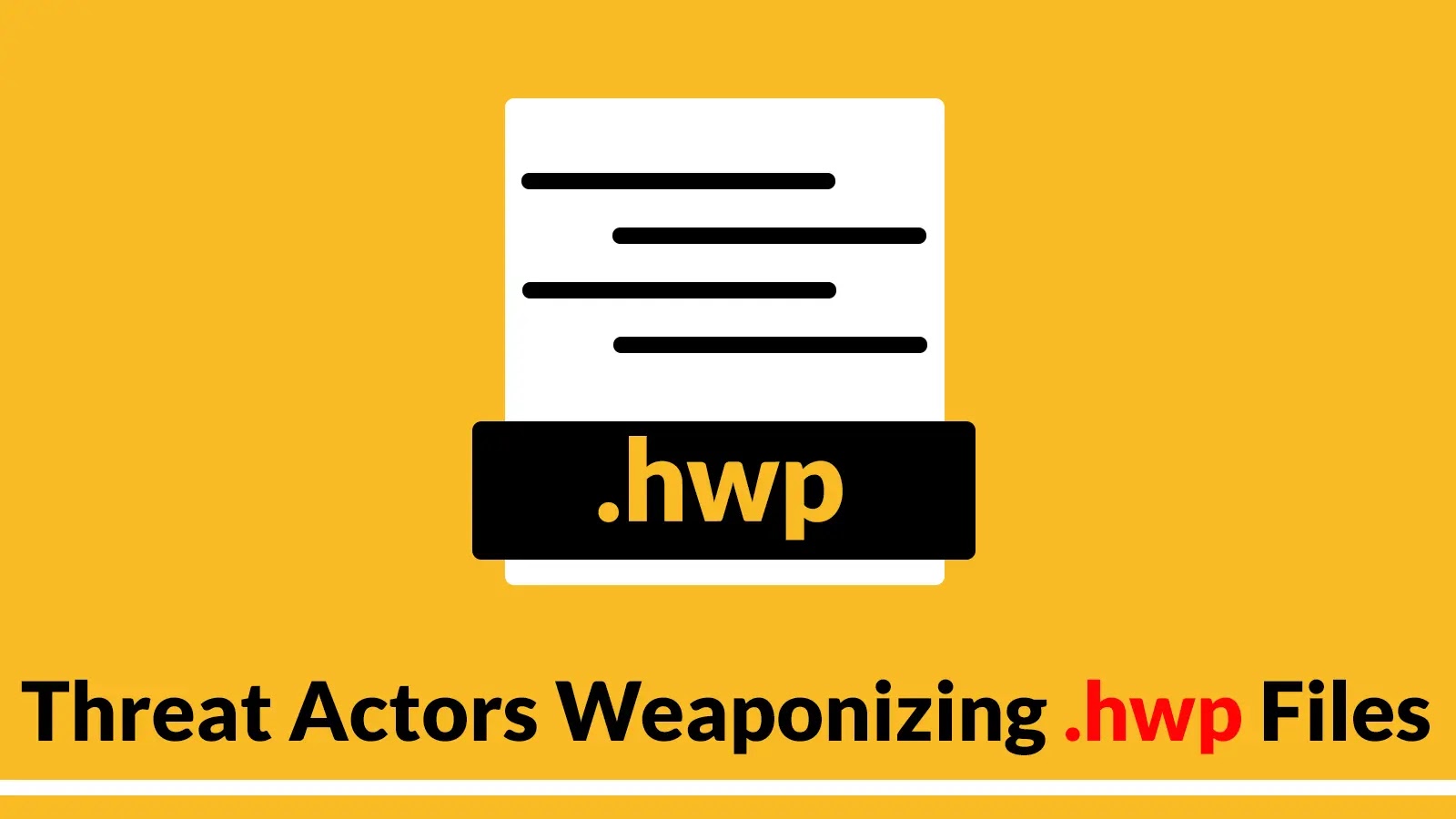
Threat Actors Weaponizing .hwp Files to Deliver RokRAT Malware
The cybersecurity landscape currently faces a pressing threat: highly sophisticated campaigns leveraging unconventional methods to deliver potent malware. A recent, significant development reveals threat actors are weaponizing Hangul Word Processor (.hwp) files to distribute the notorious RokRAT malware. This strategic evolution from traditional infection vectors, such as malicious shortcut (LNK) files, underscores a critical shift in adversary tactics and demands immediate attention from security professionals.
RokRAT Malware Delivery: The Evolution from LNK to HWP
RokRAT, a persistent remote access trojan, has historically been associated with distribution via malicious LNK files. This method involved tricking users into executing a shortcut that downloaded and installed the malware. However, threat actors have now diversified their delivery mechanisms, demonstrating a refined understanding of defense evasion. The current campaign highlights a pivot to .hwp files, a format primarily used by the Hangul Word Processor, popular in South Korea and other Asian countries.
This shift signifies a deliberate attempt to bypass existing security controls that may be more attuned to detecting LNK-based infections. By embedding the malware within legitimate-looking document files, attackers increase their chances of initial compromise. The use of .hwp files also suggests a potential targeting of specific regions or organizations that routinely use this software, indicating a more tailored and focused attack strategy.
Understanding the RokRAT Malware and its Capabilities
RokRAT is a highly capable remote access trojan designed for espionage and data exfiltration. Once successfully deployed, it can:
- Establish persistence on the compromised system.
- Collect sensitive information, including credentials, documents, and system configurations.
- Execute arbitrary commands.
- Download and execute additional payloads.
- Maintain covert communication with command-and-control (C2) servers.
The sophistication of RokRAT, coupled with its evolving delivery methods, positions it as a significant threat to organizations’ data integrity and operational continuity. Its ability to evade traditional detection methods by leveraging document formats like .hwp files makes it particularly dangerous.
Tactics, Techniques, and Procedures (TTPs) of HWP-Based Attacks
The campaign employing .hwp files for RokRAT delivery showcases sophisticated TTPs. These attacks typically involve:
- Carefully Crafted HWP Files: Threat actors meticulously design .hwp documents to appear legitimate, often using tempting or urgent titles relevant to the target’s industry or current events. This social engineering component is crucial for successful initial access.
- Embedded Malicious Objects: Rather than relying on direct executable files, the .hwp documents likely contain embedded objects or scripts that, when opened, exploit vulnerabilities in the Hangul Word Processor or leverage legitimate functionalities for malicious purposes. While a specific CVE has not been publicly linked to this campaign’s HWP exploitation method, it is crucial to remain vigilant for potential unpatched vulnerabilities.
- Multi-Stage Infection Chains: The initial compromise via the .hwp file is often just the first step in a multi-stage infection chain. This might involve downloading further components or establishing a persistent backdoor before the full RokRAT payload is delivered and executed.
Remediation Actions and Prevention Strategies
Organizations must adopt a multi-layered security approach to counteract these evolving threats. Here are critical remediation actions and prevention strategies:
- User Awareness Training: Invest in continuous cybersecurity awareness training for employees, emphasizing the dangers of opening suspicious email attachments, especially those with unfamiliar file extensions or from unknown senders. Educate users on the risks associated with .hwp files if their organization operates in regions where this format is prevalent.
- Endpoint Detection and Response (EDR): Deploy and continually monitor EDR solutions capable of detecting anomalous behavior and identifying malicious activity, even if traditional signature-based methods are bypassed.
- Email Security Gateways: Implement robust email security solutions with advanced threat protection capabilities, including attachment sandboxing and deep content analysis for less common file formats like .hwp.
- Application Whitelisting: Consider implementing application whitelisting to restrict the execution of unauthorized programs. This can prevent RokRAT from running even if it successfully bypasses initial protections.
- Patch Management: Maintain a rigorous patch management program for all software, especially productivity suites and operating systems. While no specific CVE for this HWP exploitation has been identified yet, promptly applying security updates minimizes the attack surface.
- Network Segmentation: Implement network segmentation to limit lateral movement within the network in case of a successful breach.
- Data Backup and Recovery: Regularly back up critical data and test recovery procedures to minimize the impact of a successful malware attack.
Relevant Tools and Technologies for Detection and Mitigation
Leveraging appropriate cybersecurity tools is essential for defending against threats like RokRAT delivered via HWP files. The following table outlines valuable tools:
| Tool Name | Purpose | Link |
|---|---|---|
| Endpoint Detection and Response (EDR) Solutions | Real-time threat detection, investigation, and response on endpoints. | Gartner EDR Overview |
| Sandboxing Technologies | Executing suspicious files in an isolated environment to observe their behavior. | Cisco Secure Malware Analytics (formerly Threat Grid) |
| Email Security Gateways | Filtering malicious emails, including those with weaponized attachments. | Palo Alto Networks Advanced URL Filtering |
| Threat Intelligence Platforms (TIP) | Providing timely insights into new threats, TTPs, and indicators of compromise. | Recorded Future |
| Network Intrusion Detection/Prevention Systems (NIDS/NIPS) | Monitoring network traffic for suspicious patterns and blocking known malicious activity. | Snort |
Conclusion
The shift by threat actors to weaponize .hwp files for RokRAT distribution illustrates the adaptive nature of advanced persistent threat groups. Cybersecurity professionals must acknowledge these evolving tactics and adjust their defense strategies accordingly. Proactive measures, including comprehensive user education, advanced threat detection technologies, and robust patch management, are paramount in safeguarding against sophisticated malware campaigns. Maintaining vigilance and continuously adapting security postures remain the most effective defense.





